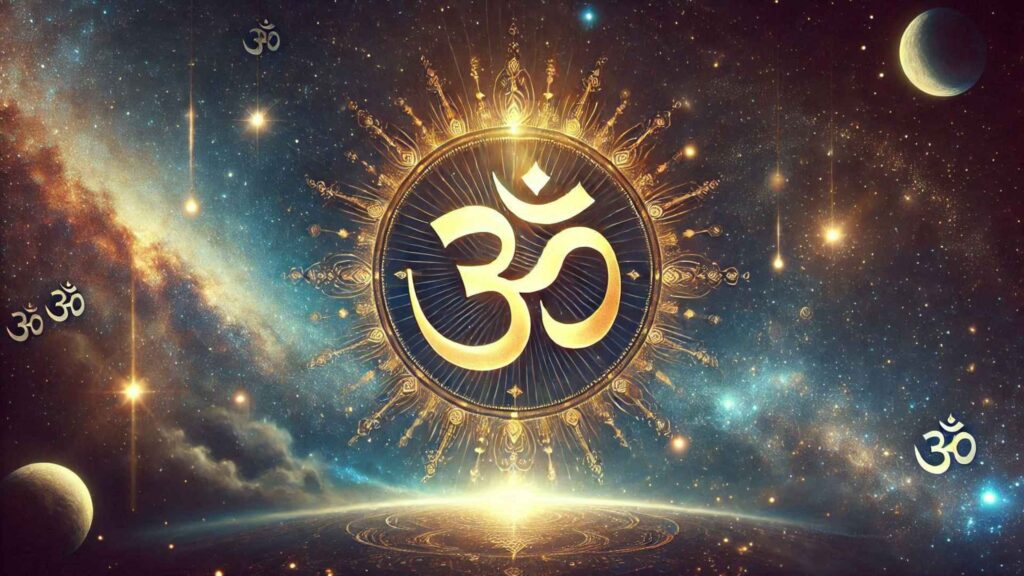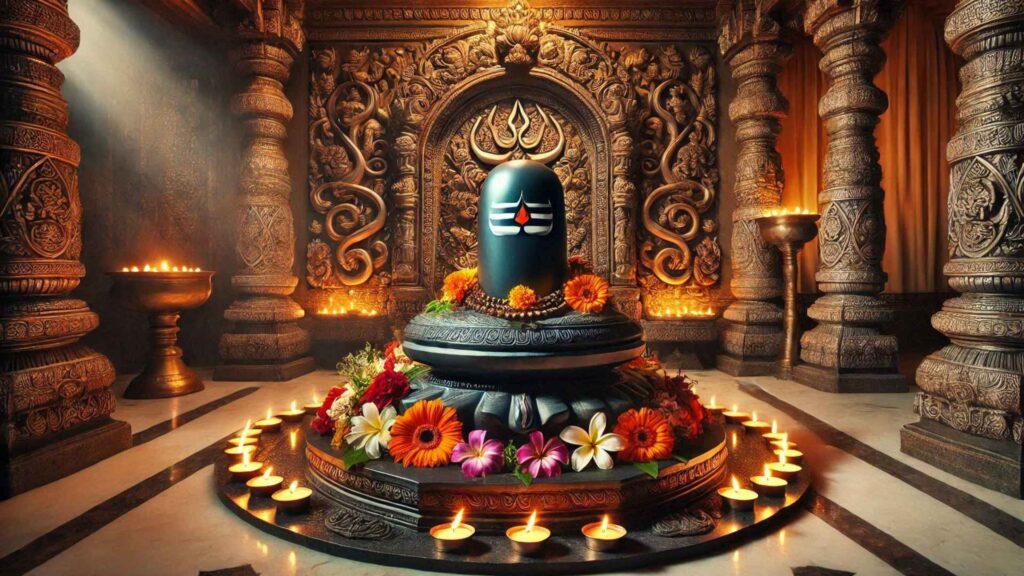Element Spiritual Meaning in Hinduism: Understanding Sacred Symbols
Sacredness in Hinduism
Hinduism, a religion celebrated for its depth and diversity, finds the divine in every aspect of existence. Sacred elements like the Om symbol, Shiva Lingam, Shaligram, sacred thread (Janeu), prayer beads (Mala), and the conch shell (Shankh) hold profound spiritual meaning. These symbols are more than ritualistic tools—they are vessels of divine energy and wisdom, interwoven with the essence of Hindu spirituality.
Read More About sacred texts
Hook Statement
Imagine chanting Om and feeling its vibrations resonate within, connecting you to the universe’s rhythm. Or holding a Shiva Lingam, a symbol of infinite creation, during meditation. These sacred elements are gateways to profound spiritual experiences.
Overview of Sacred Elements
In Hinduism, sacredness is not confined to the divine but extends to objects, symbols, and sounds that embody cosmic principles. Each element holds layers of meaning, functioning as spiritual tools to elevate one’s consciousness.
Modern Relevance
In today’s fast-paced world, these sacred symbols act as spiritual anchors, providing a sense of connection and grounding. Their significance has transcended generations, uniting ancient wisdom with contemporary spiritual practices.
2. Historical Background: Tracing the Roots of Sacred Elements
Om Symbol

The Om symbol (ॐ) is first mentioned in the Rigveda, where it is described as the primordial sound of creation. The Mandukya Upanishad expands on its significance, associating it with the ultimate reality, Brahman. Over centuries, Om became a cornerstone of Hindu philosophy and practice, appearing in prayers, meditation, and sacred texts.
Shiva Lingam

The Shiva Lingam symbolizes Lord Shiva’s formless and infinite nature. Its origins can be traced to the Indus Valley Civilization, where phallic symbols were revered as representations of fertility. The Shiva Purana narrates the story of the Lingam as a pillar of light, emphasizing its spiritual and cosmic symbolism.
Shaligram

The Shaligram, a sacred stone found in the Gandaki River, is a physical representation of Lord Vishnu. Ancient texts like the Skanda Purana and Padma Purana document its use in Vaishnavite worship. Fossilized ammonites with unique patterns, Shaligrams have been integral to Hindu rituals for over a millennium.
Sacred Thread (Janeu)

The Janeu, or sacred thread, originated during the Vedic period as a mark of spiritual initiation. The Upanayana ceremony introduced young boys to the study of sacred texts, signifying their spiritual rebirth. Historical references in the Manusmriti highlight its importance as a symbol of purity and discipline.
Prayer Beads (Mala)
Prayer beads have been part of Hindu meditation since antiquity. The Rudraksha mala, associated with Lord Shiva, and the Tulsi mala, linked to Lord Vishnu, are mentioned in scriptures like the Shiva Purana. These malas are tools for focus and spiritual connection.
Conch Shell
The Shankh, or conch shell, features prominently in Hindu epics like the Mahabharata, where it served as both a war trumpet and a ritual object. Associated with Lord Vishnu and Goddess Lakshmi, the Shankh symbolizes purity, auspiciousness, and victory.
3. Spiritual Significance: Meaning Beyond the Physical
Om Symbol
Om embodies the vibration of the universe, representing creation, preservation, and dissolution. Chanting Om aligns the practitioner’s energy with the cosmic rhythm, fostering spiritual awakening and inner peace.
Shiva Lingam
The Shiva Lingam signifies the union of Purusha (consciousness) and Prakriti (energy). It represents creation, preservation, and destruction, reminding devotees of Shiva’s omnipresence and boundless nature.
Shaligram
Shaligrams are believed to carry the essence of Lord Vishnu, offering protection, prosperity, and spiritual guidance. Each Shaligram is unique, symbolizing different aspects of Vishnu’s energy, from Narayana to Krishna.
Sacred Thread (Janeu)
The Janeu connects the wearer to their spiritual duties and societal responsibilities. It represents the threefold path of knowledge (jnana), action (karma), and devotion (bhakti).
Prayer Beads (Mala)
Each bead in a mala represents a step toward enlightenment. The repetition of mantras using prayer beads enhances focus, cleanses the mind, and fosters divine connection.
Conch Shell
The Shankh’s resonant sound purifies the environment and invokes auspicious energies. Its spiral shape symbolizes the journey of the soul from ignorance to enlightenment, aligning it with cosmic harmony.
4. Practical Application: Sacred Elements in Worship
Om Symbol
- Meditation: Chanting Om enhances mental clarity and spiritual focus.
- Daily Rituals: Om is recited at the beginning and end of prayers to signify completeness.
Shiva Lingam
- Abhishekam: Ritual bathing with water, milk, and honey is performed to purify the Lingam.
- Temple Worship: Lingams are central to Shaivite temples, attracting millions of devotees during festivals like Mahashivaratri.
Shaligram
- Home Altars: Shaligrams are worshipped daily with offerings of Tulsi leaves and sandalwood paste.
- Festivals: They play a key role in Vishnu-related celebrations like Janmashtami and Diwali.
Sacred Thread (Janeu)
- Ceremonies: The Janeu is worn during rites like Upanayana and marriage.
- Daily Use: It serves as a constant reminder of spiritual discipline and purity.
Prayer Beads (Mala)
- Mantra Chanting: Malas are used for japa, repetitive chanting of mantras like Gayatri or Hare Krishna.
- Meditation Tool: They help focus the mind and enhance spiritual vibrations.
Conch Shell
- Puja Rituals: The Shankh is blown to mark the beginning and end of rituals.
- Festive Celebrations: Integral to arati ceremonies during festivals like Navaratri and Durga Puja.
5. Cultural Impact: Sacred Elements in Society
Om Symbol
Om transcends religious boundaries, influencing global spirituality, yoga practices, and wellness trends.
Shiva Lingam
The Lingam inspires temple architecture and art. Festivals like Mahashivaratri celebrate its significance, uniting millions in devotion.
Shaligram
Shaligrams hold cultural significance in Vaishnavite traditions, often passed down as family heirlooms.
Sacred Thread (Janeu)
The Janeu ceremony is a cultural milestone, symbolizing spiritual growth and responsibility.
Prayer Beads (Mala)
Malas are increasingly popular in global meditation practices, bridging ancient traditions with modern mindfulness.
Conch Shell
The Shankh’s presence in Indian classical art, dance, and literature reflects its deep-rooted cultural and spiritual significance.
6. Conservation and Preservation
Challenges
- Environmental degradation affecting sources of Rudraksha and Tulsi.
- Pollution threatening the habitat of Shaligrams in the Gandaki River.
Preservation Efforts
- Sustainable farming practices for Rudraksha and Tulsi cultivation.
- Community-led initiatives to protect sacred rivers like the Gandaki.
Future Outlook
Increased awareness and sustainable practices are crucial to preserving these sacred elements for future generations.
7. Expert Insights
- Religious Scholars: “These sacred elements are not just ritualistic tools but gateways to the divine, offering profound spiritual insights.”
- Scientific Research: Studies highlight the calming effects of Om chanting and the therapeutic benefits of Rudraksha beads.
- Modern Interpretations: Sacred elements continue to adapt, bridging ancient wisdom with contemporary spiritual needs.
8. Conclusion
The spiritual meaning of Hindu elements—Om, Shiva Lingam, Shaligram, Janeu, prayer beads, and the conch shell—extends beyond their physical forms. They represent timeless truths, guiding practitioners toward spiritual awakening and divine connection.
Which of these sacred elements resonates with your spiritual journey? Share your thoughts and explore more on Hinduvism.com.


